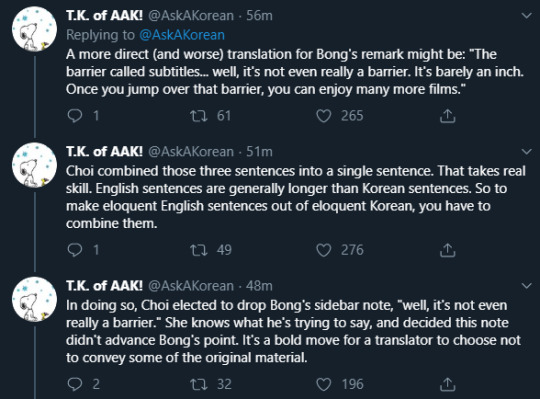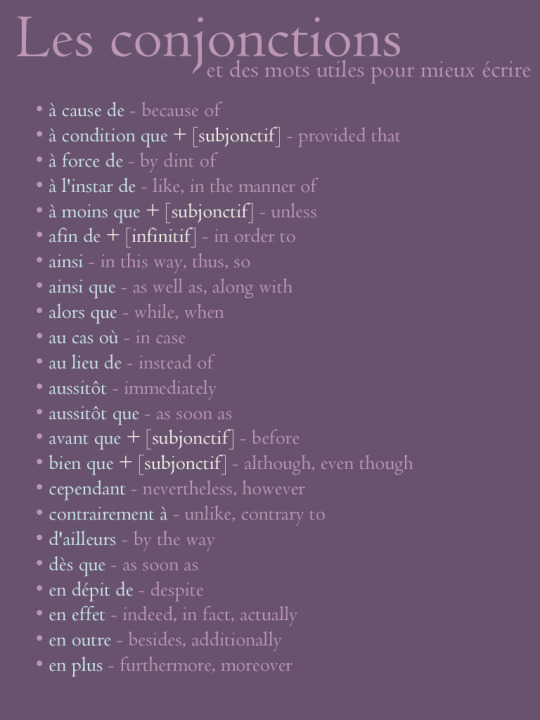Text
見る vs. 観る、聞く vs. 聴く
First you learn 見る and 聞く, but then somewhere along the line come 観る and 聴く with the same pronunciations - but what is the difference? I wasn't sure myself until I looked it up! Here are the differences and examples of how to use them:
見る みる to see (passive)
This kanji is used when the viewer is watching or viewing something passively, like binge watching Netflix or using a phone while a movie is on.
昨日は、テレビを見ていて、そのまま寝入ってしまいました。
きのうは、テレビを見ていて、そのままねはいってしまいました。
Yesterday, I watched some TV, and I fell asleep like that.
観る みる to watch (active)
This kanji is used when the viewer is paying close attention to something, like watching a movie at the movie theatre or a sporting event on TV.
毎週の土曜日に好きな恋愛ドラマを絶対に観るよ。
まいしゅうのどようびにすきなれんあいドラマをぜったいに観るよ。
Every Saturday I always watch my favorite romantic drama.
聞く きく to hear (passive)
This kanji is used when the listener is hearing something passively, like playing music while doing something else or when they are listening to a noise from outside.
音楽を聞きながら勉強している。
おんがくを聞きながらべんきょうしている。
I am studying while I listen to music.
聴く きく to listen (active)
This kanji is used when the listener is attentively listening to something, like a concert or music or a friend's story.
ラジオで好きなアーティストの新曲を聴く。
ラジオですきなアーティストのしんきょくを聴く。
I listen to my favorite artist's new songs on the radio.
Remember:
If you are not sure which to use, using 見る or 聞く is the default, and it's not wrong.
見る and 聞く are used when the thing you are watching/listening to is ambient or is not something you aren't paying a lot of attention to.
観る and 聴く are used when you are paying closer attention to whatever you are watching/listening to.
It's not specified in any of the explanations I read, but it seems that 観る and 聴く are used mostly to talk about your own viewing and listening. This makes sense, because it's easier to determine what you personally are focused on (or not) rather than determining the focus of another person.
253 notes
·
View notes
Text
Sleepy vocab in Turkish

uyku - sleep
uyumak - to sleep
uykulu - sleepy
yorgunluk - tiredness
yorgun - tired
esnemek - to yawn
İyi geceler - Good night!
İyi uykular - Sleep well!
Tatlı rüyalar - Sweet dreams!
kestirmek - nap
uzanmak - to lie down
uyuya kalmak - to fall asleep
rüya - dream
kabus - nightmare
dönüp durmak - to toss and turn
horlamak - to snore
uyanmak - to wake up
kalkmak- to get up
uyku sarhoşu - drowsy, sleepy (lit. “sleep drunk“)
uyanık - awake
yatak odası - bedroom
yatak - bed
kanepe, koltuk - couch, sofa
battaniye - blanket
yastık - pillow
lamba, başucu lambası - bedside lamp
alarm saati - alarm clock
uyur gezer - sleepwalking
Translated by this. Credit to: @talen-en-regendagen
#christianing my return to langblr by reblogging a vocab list i will probably never use#useful tho#turkish#ref
377 notes
·
View notes
Text
Irish Language Resources
DICTIONARIES
focloir.ie (search for words in English) + audio samples
teanglann.ie (search for words in Irish/English) + audio samples
tearma.ie (search for terms in Irish/English)
potafocal.com (dictionary)
dil.ie (dictionary of medieval Irish)
DATABASES
logainm.ie (placenames in English/Irish and their meanings)
ainm.ie (biographies in Irish)
NEWSPAPERS & MAGAZINES
seachtain (online weekly newspaper)
nos.ie (online cultural magazine)
comhar.ie (online literary and current affairs magazine)
tuairisc.ie (online news magazine)
meon eile (belfast based news and videos)
nuacht1.com (gathers news from various online sources)
peig.ie (information hub and news source)
TV
tg4.ie (national Irish language tv station)
nuacht rté (rté news in Irish)
rté (rté website of articles/videos etc. in Irish)
bbc gaeilge (bbc’s Irish language content)
RADIO
raidió na gaeltachta (national Irish language station)
raidió na life (Irish language station located in Dublin)
raidió fáilte (Irish language station located in Belfast)
raidió rí-rá (Hit music station that broadcasts through Irish)
blas (bbc’s Irish language radio show)
raidió na dtreabh (online station based in Galway)
LANGUAGE COURSES
easy irish (basic online introduction to the language by rté)
duolingo (total beginner introduction + audio examples)
gaelchultúr (includes online course for adults + language level testing)
oideas gael (adult Irish language and cultural courses)
gael linn (courses for teenagers and adults)
daltai.com (language courses in usa/canada as well as other countries)
peig.ie (includes map with Irish courses, conversation circles, events, + summer camps)
YOUTUBE
now you’re talking! (complete Irish language learning tv show from the 1990s)
nuacht tg4 (official tg4 youtube channel)
clisare (youtuber, various videos teaching the language)
scúp (tv show about struggling Irish language newspaper in Belfast)
DOCUMENTARIES
des bishop: in the name of the fada (US/Irish comedian learns Irish for a year)
guth in eag? a lost voice (insight into the decline of the Tyrone native Irish)
an feidir linn? can we? (investigating the revival of the Irish language)
it’s a blas! (BBC NI presenter learns Irish to host radio show) [audio missing]
MOVIES
lipservice (short film)
yu ming is anim dom (short film)
cáca milis (short film)
clare sa spéir (short film)
poitín (first feature film entirely in Irish)
fíorghael (short film)
the wind that shakes the barley (available dubbed in Irish)
song of the sea (amhrán na mara) (animated movie available in Irish)
MUSIC
songsinirish.com (database of songs in Irish + English translations)
ceol’08 (Irish artists sing their songs in Irish)
tglurgan (language students perform popular hits in Irish)
rte2fm (various artists perform songs in Irish)
m. máire ó súilleabháin (Irish songs with translations)
SHOPS
siopa.ie (books, music, games and more)
cnagsiopa.com (books, dvds and more)
anceathrupoili.com (bookshop)
udar.ie (games in the Irish language)
gael linn (includes shop with books, dvds and more)
daltai.com (includes shop with some learning books)
cló lar-chonnacht (music, books)
SELF-LEARNING
rosetta stone (software or online)
living language Irish (books, cds, online, apps)
linguashop (software, cds, books)
MISCELLANEOUS LEARNING
mylanguages.org (basic introduction to various parts of the language)
omniglot.com (history of the language, vocabulary)
duolingo.com (course aimed at complete beginner, audio examples)
101languages.net (beginner overview)
wikibooks.org (beginnger course)
irishcultureandcustoms.com (phrases, vocabulary)
OFFICIAL ORGANISATIONS
foras na gaeilge (responsible for the promotion of the Irish language throughout Ireland)
gaeilge.ie (information on Irish language organisations and services)
seachtain na gaeilge (Irish language week: annual national event)
udaras.ie (includes brief history of the language)
coimisineir.ie (includes more brief history)
APPS
getthefocal (two way translator)
cúla4 (aimed at children who are native speakers)
OTHER
list of Irish language media (wikipedia page)
ga.wikipedia.org (wikipedia in Irish)
abair.tcd.ie (turn written Irish text into speech)
lexilogos.com (many useful links!)
2K notes
·
View notes
Video
Irish with Hozier:
- uisce = water
- uisce beatha = whiskey (lit. water of life)
- uiscefhuaraithe = water-coolness
- Níl aon tinteán mar do thinteán féin = There’s no hearth like your own hearth (There’s no place like home)
- Níl aon tóin tinn mar do thóin tinn féin = There’s no sore/poorly arse like your own sore/poorly arse
7K notes
·
View notes
Text
Everyone’s like “those Germans have a word for everything” but English has a word for tricking someone into watching the music video for Rick Astley’s Never Gonna Give You Up.
467K notes
·
View notes
Text
Hindi Lesson 2: Varnamala pt 2
Consonants in Hindi are called vyanjan and they’re mostly arranged according to the manner and place of articulation, making it easy to remember the order.
Manner essentially refers to the way in which different parts of your mouth interact to create a sound, and place refers to where this interaction happens. In this lesson, we’ll cover 5 rows of vyanjan, which is 5 PLACES of articulation.
क ख ग घ ङ
च छ ज झ ञ
ट ठ ड ढ ण
त थ द ध न
प फ ब भ म
Each row goes from unvoiced to voiced (with an unaspirated and aspirated version of each) to the nasal.
Aspirated consonants are consonants followed by a little burst of air, kind of like the way the letter p is pronounced in the word "pin" in English.
Row 1 consists of VELARS, which are pronounced near the back of the mouth, around the area you'd pronounce k or g in English.
Row 2 consists of palatals, which are pronounced near the middle of the roof of the mouth, like ch in English.
Row 3 consists of retroflex consonants, which are pronounced near the roof of the mouth as well, but the tongue is curled backwards. This doesn't have an exact parallel in English, but I suggest looking them up and trying to pronounce them since these are very common sounds in Hindi.
Row 4 consists of dental consonants, which are pronounced with the tongue up against the upper teeth. Think th in “the” but with your tongue actually touching your teeth.
Row 5 consists of labial consonants, which are pronounced with the lips against each other, like m or b in English.
Let's look at these rows in detail!
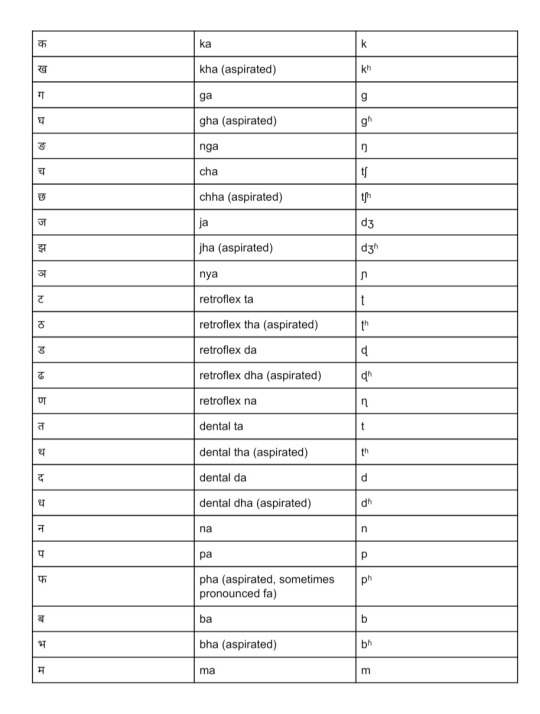
To end this lesson, here are a few words that use both these consonants and the vowels from the previous lesson. These words may not seem very useful, but they’re easy to pronounce and figure out.
कलम - pen (this word has another spelling, but we’ll get to it later)
खाना - food
गंदा - dirty
घंटा - hour
चुपचाप - quietly
छाता - umbrella
जादू - magic
झंडा - flag
टोपी - cap
ठीक - fine, proper
डाँट - scolding (noun)
ढक्कन dhakkan - lid (oh what’s that weird double letter? perhaps this will be covered in the future ;))
ताकत - strength
थका - tired
दाँत - teeth
धोना - to wash
नई - new
पेट - stomach
फेंकना - to throw
बदबू - bad smell
भूख - hunger
माँ - mother
21 notes
·
View notes
Text
Hindi Lesson 1: Varnamala pt 1
Hindi is written in Devanagari, and the arrangement of all the letters is called Varnamala (garland of letters). There’s no letter case, meaning there’s no distinction between upper and lower case. It looks something like this: वर्णमाला
Above the actual letters, there’s a line that string them all together (like a garland!), and the words hang off the lines instead of resting on them, like in English.
For this lesson, let’s cover the vowels. These are called स्वर (svar). Hindi uses an abugida script, which means the vowels have secondary form called a मात्रा maatraa that is used in combination with consonants. For example, while ई would be used when it isn’t preceded by a consonant, and its maatraa, ी, is used when it IS preceded by a consonant.
Here are the svar!

The little circles represent the consonants’ position. For example, क+ी = की.
You may have noticed that अ doesn’t have a maatraa. This is because consonants inherently have the अ sound. For example, क has no written maatraa but is pronounced ka [kə].
Also, some of these don’t seem like vowels, specifically ऋ, अं, अः and अँ (similar function to अँ). However, this is just how they’re arranged and how natives learn them, so it’s best to include them when you’re learning vowels.
And those are the svar!
When we did these in school, most teachers used the following words to make the learning process easier. While we already know these words even before we learn how to read and write, and they aren’t very common or useful for beginners, but it could be interesting to know how natives learn their own language.
Don’t worry about consonants, we’ll get there soon!
अनार anaar - pomegranate
आम aam - mango
इमली imlii - tamarind
ईख iikh - sugarcane
उल्लू ulluu - owl
ऊन uun - wool
ऋषि riṣi - sage
एड़ी eṛii - heel
ऐनक ainak - glasses
ओखली okhali - mortar
औरत aurat - woman
अंगूर anguur - grapes
25 notes
·
View notes
Link
The project aims at improving dialectal Arabic processing by:
developing resources for Arabic Dialect modeling, including the creation of a 25-city multi-dialect lexicon and a 25-city multi-dialect parallel corpus;
developing machine translation systems among dialects, dialects and English, dialects and Standard Arabic; and
developing dialect identification systems that can work on a variety of granularity levels.
The MADAR Project is the largest in scale and depth to date when it comes to working on natural language processing of Arabic dialects.
49 notes
·
View notes
Text
We need to talk about LingoHut
I’m supposed to be studying some Italian, but instead, I was googling in my computer how to learn a new language (no, googling how to learn will not teach you shit, you have to sit down and learn your target language not how to do it, I know but I’m lazy.) and I came across LingoHut, and I have to share it.
I don’t know if someone ever talked about this page, but if they did is worth mentioning again.
So basically you go to the website and in the Home Page you have to choose what is your first language and what language are you trying to learn.
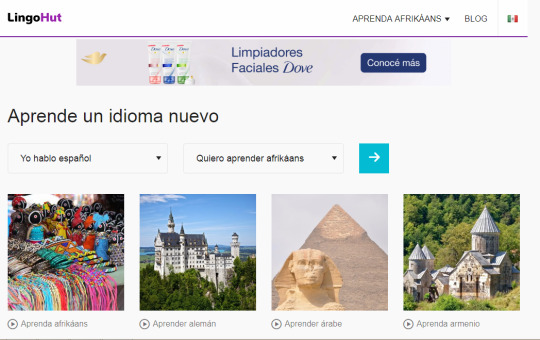
Once you choose it’ll take you to another page in which you have tons of lessons, for ex. In Italian, there are 109 lessons.
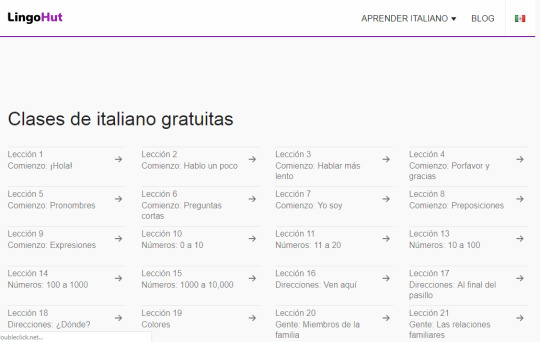
I haven’t checked every lesson yet but for example, the first one is greetings and such. You click that lesson and you have 16 flashcards that will show you the word in your target language and the translation, at the same time that someone pronounces the words.

Below the flashcards, you have this ⬇️

And basically is a bunch of game, an easy matching words kind of game, some kind of tic tac toe with words, a memory game do you know the one that kids play in which they have to find the matching pictures? Same but with words and lastly a listening and matching game.
Below the bar of the games, we have the vocabulary list of the words we are taught in that lesson, and you can click the word and listen the pronunciation.
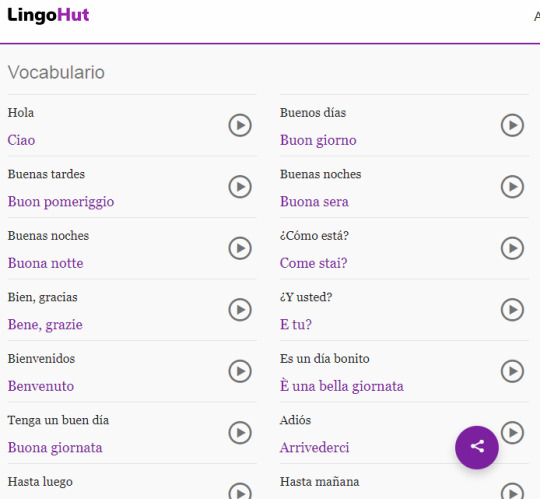
In the end, you have a bunch of the next lessons.

The lessons vary from the content it can be greetings, numbers, health stuff, office words, computer terminology, etc.
The website doesn’t have every language in the world, but it has a lot of them. choose your target language, in my case Italian, and enjoy, is fun and simple if you want to practice or do something related to your target language but you don’t have the willingness that day to study something more consistent like structure.
And the best part is that as far as I went looking around in this page it’s fucking free. Sure, you won’t end the one hundred and something lessons speaking like a native from whatever target language you’re learning, but it can be useful to expand your vocabulary.
11K notes
·
View notes
Text
HR: if they work 40 hours a week u have to give them benefits
Big company: hmm okay. They shall work 39
435K notes
·
View notes
Note
Hey there! Are there any textbooks or other resources you'd recommend for learning Irish?
Ohhh yes yes!I am a fan of the Gaeilge gan Stró book if you’re learning by yourself. HOWEVER, there are three parts. Don’t get the green one for beginners, get the lower intermediate one. That’s because the green one is on Memrise and you can just get the basics from there and then work on the red intermediate one. The blue one is for grammar and it’s super good, too. Also, https://scholar.harvard.edu/natashasumner/publications/bunt%C3%BAs-na-gaeilge-textbook-irish-132-introduction-modern-irish this one, Buntús na Gaeilge, used to be up online for free use, both parts (two, I think), but it’s no longer available. However, I bet if you search for a while, you’ll find it! I am also a fan of the TEG exam resource files where you can practice for language exams. They give you exercise and some more cool things to practice with. And this page: http://www.nualeargais.ie/gnag/gram.htm is honestly the best page ever for grammar. Whenever you need to look something up, you’ll always find it here. If you have more resources, let me know. For me, these are the ones that stuck and that I use the most.
64 notes
·
View notes
Note
Hey there! Are there any textbooks or other resources you'd recommend for learning Irish?
Ohhh yes yes!I am a fan of the Gaeilge gan Stró book if you’re learning by yourself. HOWEVER, there are three parts. Don’t get the green one for beginners, get the lower intermediate one. That’s because the green one is on Memrise and you can just get the basics from there and then work on the red intermediate one. The blue one is for grammar and it’s super good, too. Also, https://scholar.harvard.edu/natashasumner/publications/bunt%C3%BAs-na-gaeilge-textbook-irish-132-introduction-modern-irish this one, Buntús na Gaeilge, used to be up online for free use, both parts (two, I think), but it’s no longer available. However, I bet if you search for a while, you’ll find it! I am also a fan of the TEG exam resource files where you can practice for language exams. They give you exercise and some more cool things to practice with. And this page: http://www.nualeargais.ie/gnag/gram.htm is honestly the best page ever for grammar. Whenever you need to look something up, you’ll always find it here. If you have more resources, let me know. For me, these are the ones that stuck and that I use the most.
64 notes
·
View notes
Text
I’ve said this before and I’ll say it again but it is absolutely an example of civilizational inadequacy that only deaf people know ASL
“oh we shouldn’t teach children this language, it will only come in handy if they [checks notes] ever have to talk in a situation where it’s noisy or they need to be quiet”
327K notes
·
View notes
Text
U kno what???? Honestly?? All jokes side about the Duolingo owl, Duolingo is one of the only language education services I know of that doesn’t charge for the full course and I really think we don’t appreciate that enough in a world where knowledge is severely (and increasing) restricted based on income. I just went through the app store and downloaded every language app I can find, and the only two that didn’t charge hefty subscription fees to access all the lessons were duolingo and memrise. Support free education.
213K notes
·
View notes

